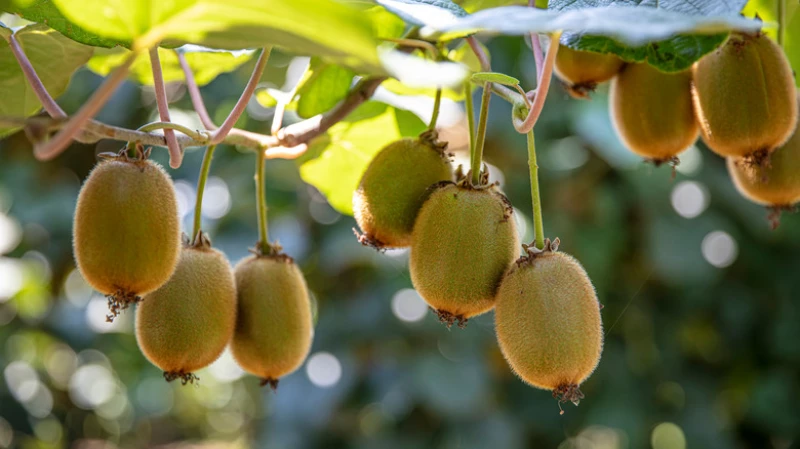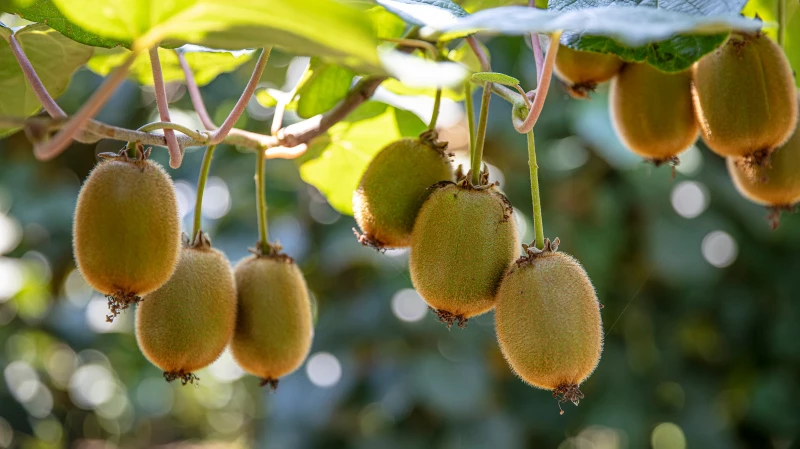Discover the wonders of the kiwi plant (Actinidia deliciosa), a lively climbing vine famous for its fuzzy, brown-skinned fruits. Cultivating your own kiwi vine is a straightforward process - starting with collecting seeds from a store-bought kiwi fruit to kick off the propagation of your very own plant. Thriving in USDA zones 7a to 9b (particularly excelling in zone 9), your cultivated vine might even yield delicious kiwis. Nevertheless, even if the fruits don't appear, this climber still serves as a visually pleasing addition to your moderate climate garden.
Tips for Successfully Germinating Kiwi Seeds from Store-Bought Fruits
When aiming to grow kiwi plants from store-bought fruits, it's crucial to start with a fully ripe kiwi to ensure mature seeds. Begin by cutting the kiwi in half lengthwise and scooping out the small black seeds with a butter knife or teaspoon. Place the seeds in a bowl of water to separate viable seeds from non-viable ones — the healthy seeds will sink while the others will float. Discard any floating seeds and lay the remaining ones on a dry paper towel. Using a butter knife, gently scrape the seeds to remove the pulp, repeating this process a few times until the seeds are clean, dry, and slightly elastic.
Growing and Caring for Kiwi Fruit Vines

Now, they are ready for germination. Lay the seeds on a clean paper towel and spray with water to moisten them. Fold the towel in half and place it in a plastic ziplock bag to create a humid environment. Place the sealed bag in a warm, bright location away from direct sunlight. Check daily for signs of sprouting — germination should take 10 to 14 days. Once the seeds have sprouted, plant them in pots with a well-draining seed starting mix. Cover the pots with a plastic bag and place them in a warm, bright location. Once the seedlings are large enough to handle, transplant them into individual pots.
Keep your kiwi seedlings indoors or in a greenhouse for three to four months, maintaining a temperature between 60 to 80 degrees Fahrenheit. Once they are well-established, plant them out in the garden in the spring or summer. As these climbing plants are not self-supporting, they will need a strong, permanent structure (such as a trellis that maximizes your outdoor space) — choose a sheltered location that receives full sun, such as a south- or east-facing wall. Kiwi plants prefer well-draining soil rich in organic matter, so incorporate compost into the ground before planting. For the first two years, these plants will require frequent watering through the growing season, but take care not to overwater as the roots are sensitive to sitting in waterlogged soil.
For optimal growth of your kiwi vines, it is recommended to fertilize them monthly with a nitrogen-rich fertilizer during the spring and early summer. However, it is important to avoid fertilizing young plants after July to prevent new, delicate growth that is prone to frost damage in the winter. To control growth and encourage fruiting, prune your kiwi vines twice a year in the winter and summer. When pruning, make sure to retain a portion of the previous year's growth as flowers emerge on new shoots that grow on last year's stems. It may take three to five years for kiwi plants to start producing fruits. Keep in mind that plants grown from seed may not be genetically identical to the parent plant, so any fruits produced by your kiwi vine may look or taste different from store-bought kiwis.







